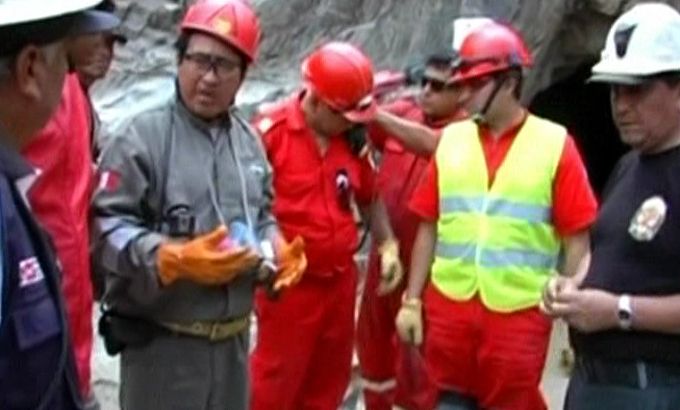Peru miners still trapped underground
Complications in rescue mission mean nine men may be stuck for another two to three days in unlicensed mine.

A rescue operation to free nine miners trapped since last Thursday in a mine in southern Peru could be delayed two to three days, according to a senior official.
Oscar Valdes, cabinet chief to Peru’s President Ollanta Humala, said on Sunday that getting to the miners’ location could take two or three days longer than anticipated due to new roof collapses inside the Cabeza de Negro mine, about 325km south of Lima, Peru’s capital.
Keep reading
list of 4 itemsAfter the Hurricane
World’s coral reefs face global bleaching crisis
Why is Germany maintaining economic ties with China?
The miners have been trapped 820ft underground in a horizontal tunnel since Thursday when a shaft collapsed.
In addition to Valdes, the government sent in Jorge Merino, mining and energy minister, to try to get the crisis resolved safely.
The nine miners, aged 22 to 59 and including a father and son, were not injured and remain together. They were being supplied with oxygen, water and soup through a metal tube that they were also using to communicate with rescue workers.
Anxiety problems
Some of the trapped men were able to speak with relatives who are staying near the mine at an improvised camp of about 80 people that also includes police, firefighters and other miners.
While their health was generally sound, some of the miners were suffering from anxiety, not unusual for the emergency situation and its risks.
“We are depressed. Please, get us out of here,” begged Jacinto Pariona in a trembling voice from the back of the area where he was trapped with his colleagues.
Authorities seemed to be cautious about taking a happy ending for granted.
Outside the tunnel, a group of rescuers cut wood beams to reinforce the tunnel walls.
Workers were using buckets to remove the debris obstructing the shaft by hand, then pushing it out of the mine in a small mining car.
Pace of operation
The rescuers were thought to be only about 6.5ft frm the miners on Saturday when more cave-ins slowed the pace of the operation, and workers had to focus anew on shoring up the chamber to avoid a larger cave-in.
“Due to the cave-ins late Saturday, we don’t know exactly the distance between rescuers and the miners but communication has been maintained constantly,” Erin Gomez, a provincial civil defence manager, said.
Cabeza de Negro is an unlicensed mine that was was abandoned more than two decades ago by its owners, but continues to be exploited.
Informal artisanal mining has been on the rise in recent years in Peru, one of the largest producers of silver, copper and gold.
The Peruvian miners’ fate recalled a similar case in Chile that made world headlines.
In August 2010, 33 miners were trapped in a cave-in in the San Jose gold and copper mine in northern Chile – after 69 days and a spectacular rescue operation with the world watching, they were brought out safely.